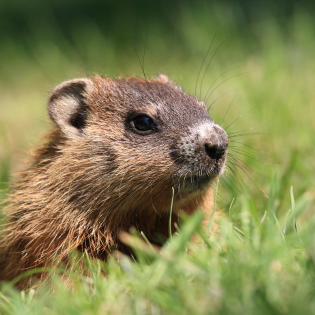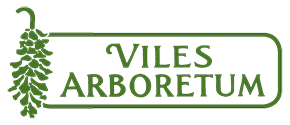Spanning 224 acres, Viles Arboretum offers a rich habitat for diverse wildlife, making it likely you'll encounter some of these creatures during your visit. To ensure a safe and enjoyable experience for both you and the animals, here are some guidelines on what to do when you come across wildlife.
Observe from a distance
Minimizing human interaction helps preserve the natural behavior of wildlife. When you come across wildlife, the best approach is to observe from a distance. It keeps you safe and helps prevent unnecessary stress on animals.
- Use binoculars or a camera with a zoom lens to get a closer look without disturbing the animal.
- Stay quiet and calm.
- Do not feed animals.
- Keep your pet on a leash.
 If you care, leave them there
If you care, leave them there
If you encounter wildlife at the Arboretum, or anywhere in the Maine outdoors, remember this moto: If you care, leave them there.
Wild animals do not make good pets, and it is against the law to possess them without the proper state and federal permits.
Wildlife is very active in the late spring and summer. You may encounter what appears to be an orphaned animal and picking it up might seem like the right thing to do; but in most cases, wildlife has a much better chance of survival when not disrupted by humans. Chances are, it hasn't been abandoned but it's mother. The mother-young bond in mammals and birds is very strong; and most likely, mom is just out searching for food and will be back soon. The best thing you can do is leave it alone.
How to identify sick or strange-acting wild animals and when to see assistance
Some species, including raccoons, fox, skunk, and woodchucks are more susceptible to rabies and other diseases. It may be tricky to tell if what they're doing is normal or a cause for concern. Most of the time, strange-seeming behaviors are just part of the healthy animal's routine. Use the table below to help differentiate between sick/strange and normal wildlife behaviors.
Sick or strange wildlife behavior
- Spinning in circles, disoriented movement, falling over, unable to walk in a straight line, drooling or foaming at the mouth, and aggression towards people, domestic animals, or other objects
- No fear of people; repeatedly approaching people
- Unresponsiveness or lethargic temperament
- Slow movements, limp appearance
- Mucous discharge in the eyes and/or nose
- Tremors
- Chewing fits
- Skunk-like smell
- Face covered in porcupine quills
Contact public safety for assistance if you are observing an animal with the behavior(s) listed above:
Augusta 1-800-452-4664
Bangor 1-800-432-7381
Houlton 1-800-924-2261
Normal wildlife behaviors or situations
- Patchy, thin, or mangey fur
- Traveling on three legs or favoring a leg
- Getting into a garden, compost pile, or bird feeder
- Living under a deck, porch, shed, or garage
- Acting defensive when cornered
- Protecting their den site or pups in spring and summer (specifically predators)
- Resting or hunting during the day in a yard, field, or meadow (any animal)
- Travelling, feeding, or hunting in full view during the day or night, even with pets and children in the area (specifically raccoon, fox, skunk or woodchuck)
There is no need to contact public safety.
Determining if an animal is injured
In most cases, it's best to leave wildlife alone and let them take care of their own injuries. Nature provides wildlife with the best options for survival and a better quality of life. 
Every year wild animals are unnecessarily picked up by well-intentioned people and brought to wildlife rehabilitators or referred to game wardens. Unfortunately, most of these animals would have lived a normal life in the wild, but instead are subject to more stress, a decreased chance of survival, and may never be able to live in the wild again. There are a few circumstances where intervention may be justified, and when it is not justified, it puts undue strain on licensed wildlife rehabilitators who need to concentrate limited resources on truly orphaned or injured wildlife.
The determine if the animal is truly injured, look for these signs:
- The animal is unable to fly, stand, walk, or run when approached by a human.
- There is an obvious large wound (cuts, broken exposed bones, or bleeding).
- The animal has been attacked by a predator (dog, cat, another wild animal).
- You witnessed the animal being hit by a vehicle.
- The animal is vomiting or experiencing uncontrolled diarrhea.
- Heavy panting for an extended period of time.
Call first! Never handle or move wildlife unless directed to do so by a wildlife professional.
If you have observed a young wild animal alone for more than 48 hours and believe it truly may be orphaned, please contact a Maine Department of Inland Fisheries & Wildlife regional biologist or game warden to alert them. Do NOT move the animal unless directed to by a wildlife professional.
-----
Source: MDIFW https://www.maine.gov/ifw/fish-wildlife/wildlife/living-with-wildlife/orphaned-injured-wildlife/index.html

